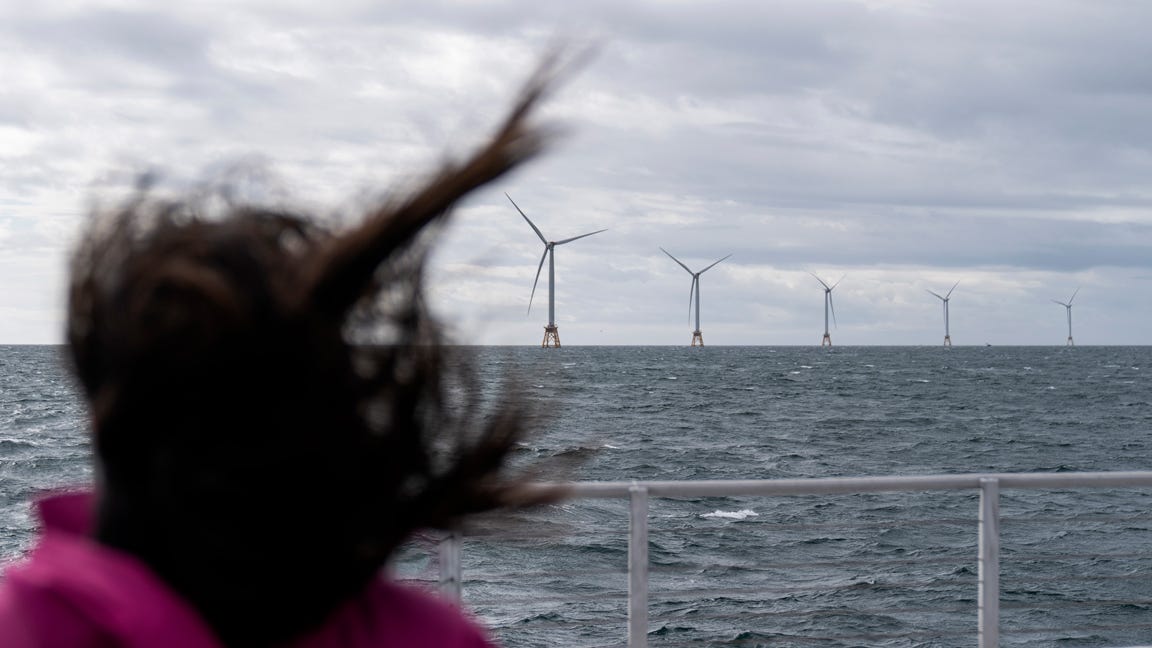Notes from an Environmentalist
Massachusetts Goes Big, Connecticut Goes Small on Offshore Wind!
America’s first commercial wind farm off Block Island Rhode Island.
Chapter 10
Massachusetts Goes Big,
Connecticut Goes Small
“We’re Going Big”
Governor Maura Healey
September 5, 2024
On September 5, 2024 Governor Healey announced that Massachusetts was “going big” on offshore wind. She agreed to purchase enough offshore wind energy from the beleaguered Vineyard 1 wind field to power 400,000 homes, meeting about twenty percent of the state’s needs.
In addition, she would purchase wind energy from South Coast Wind and Vineyard 2 which would power 1.4 million homes and remove the equivalent of a million emissions polluting cars off the road.
Rhode Island also agreed to purchase 200 megawatts of offshore wind energy and Block Island had been using electricity for over a year from five turbines off its coast. They had been operating quietly and successfully as the first commercial wind field in America.
But, developing New England’s offshore wind fields will be a massive, futuristic endeavor taking place at sea and largely out of sight. The only time most people will be aware of the wind farms will be when an errant blade topples of a turbine and drifts ashore shore at the height of the vacation season as it did in July.
As embarrassing as the unfortunate incidentit was; nobody was hurt, no boats were damaged, no wildlife wasfish or birds were injured and the inert pieces of wood and plastic were carted off to the nearest landfill without further mishap. A trivial accident compared to an oil spill or accident at a nuclear power plant.
Once the purchase agreement was signed Avangrid would start spending $3 billion dollars and hire over four thousand workers to build and install the wind turbines. Flotillas of supply boats would steam back and forth from Salem and New Bedford. Helicopters would circle overhead and heavy-duty cargo drones would rapidly shuttle supplies and evacuation gear from turbine to turbine.
But Connecticut was the fly in the ointment. While Massachusetts was going big, Connecticut was going small.
Ned Lamont, the governor of the nutmeg state, was getting cold feet. He had been hearing complaints about rising electricity rates. Why go out on a limb before the November election when it was unsure whether a wind supporter or wind enemy would be elected?
But perhaps Governor Lamont was on to something. The Paris Climate agreement had created a huge business opportunity. Countries like the United States, China, Germany, Denmark and England were offering tax incentives and subsidies for clean energy projects.
General Electric had spun off a new company GE Vernova with factories on the Gaspe Peninsula in Quebec and in Cherbourg France.
They wanted to build large wind turbines because they would produce more electricity and make more money for their developers. Eventually they came up with their Haliade-X wind turbines that was taller than any building in Boston.
In their eagerness to jump into the market they had built too big and gone too fast. The resin they used to support the 300-foot balsa and fiberglass blades apparently wasn’t strong enough to do the job.
The Pandemic had also created supply chain problems that had slowed down construction. A developer off New Jersey had already decided to stop construction and resell their leases, with so much money at stake they were sure to find new buyers.




